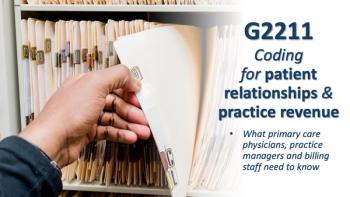
Certified PAs Make a Difference in the Fight against HIV
Experiences of a certified PA shed light on how all physicians can help care for patients with or at-risk for HIV.
About a year after I started practicing family medicine at Adventist Health in California, the medical director invited me to work with local counties as the HIV testing coordinator. The first patient I met was a little girl about my daughter's age who was born with HIV. This unwitting victim touched my heart, and that connection helped me realize that someone had to step up and get involved to help these patients.
At the end of my first year as the HIV testing coordinator, I was invited to do one-year HIV clinical fellowship at UCSF, Fresno, in the family medicine department. After completing the fellowship, I took a national exam and become credentialed as a Practicing HIV Specialist (AAHIVS). This is the same exam that physicians and nurse practitioners must pass to also earn the AAHIVS credential.
That being said, there is tremendous opportunity to make a positive impact on the fight against HIV within family practice without become a full-time specialist in this area. In fact, 90 percent of my own patients are still in family medicine, and I have a loyal patient panel typical of that specialty. Managing HIV patients is just 10 percent of my practice. All certified PAs in family medicine can make a big difference in reducing the spread of HIV/AIDS. There are simple steps that can bring positive change to all communities.
• It starts with testing. The CDC recommends opt-out HIV screening for all patients 13 years old to 64 years old. That means the provider makes HIV testing routine along with other necessary screening labs unless the patient opts out. The U.S. Preventive Service Task Force recommends HIV screening for all patients 15 years old to 65 years old. This is a "grade A" recommendation. That means the net benefit is substantial with routine HIV testing. If the age seems too young, consider this: There are about 50,000 new cases every year and one-third of them are in the 13-year-old to 29-year-old age group. Many patients don't know they have HIV, and this age group is more likely to engage in risky behavior.
• It continues with education. Certified PAs are educated in communication skills. They know how to ask questions and deliver information about the disease, how to reduce the spread of infection and how to maximize the patient's own health and maintain wellness. Education leads to patient understanding about why treatment is important. Currently, only 30 percent of patients have viral suppression because the others are still undiagnosed, not linked to care, not taking medicine, or not going to appointments. When patients are treated and the disease is controlled, there is a 96 percent reduction rate in transmission.
• It challenges all providers. There is still a stigma around this disease. Yet, you may already have HIV patients and don't know it. Estimates show 13 percent of the HIV population remains undiagnosed. If testing becomes routine, people talk about it, learn about it, and stop fearing it. You just have to treat HIV patients like all other patients. Confidentiality is important and is already covered by HIPPA.
• In family medicine, treat it as just another chronic condition like diabetes or hypertension. Treatments have advanced greatly for HIV. Patients used to have to take three to four medications a day. Now it is just one pill and there are six choices for that pill based on patient history, kidney function, etc.
I encourage PAs to work with a physician already treating HIV patients. Once they have experience, they can manage medications and patients' long term care on their own. Also, PAs can connect with the American Academy of HIV Medicine for tools and information, and make it point to direct some of the ongoing CME credits required to maintain PA-C certification in the area of infectious disease and HIV.
There is big shortage of HIV providers. A 2012 survey showed there were 4,500 HIV providers, and about 50 percent of them planned to retire in the next 10 years. The expectation is that primary-care providers will fill the void and care for HIV patients.
However, primary-care physicians are also in short supply and overburdened. We must remain vigilant and considerate about this disease. Certified PAs have always stepped up to the plate to fill the void in family medicine and underserved areas, whether it be caring for the homeless or Medicaid patients. Managing HIV patients is one more area where we can make a big difference.
Sam Wijesinghe, PA-C, AAHIVS, works in Sanger, Calif., a small, largely Hispanic community of about 25,000. Originally from Sri Lanka, Wijesinghe has been a certified PA for six years and is currently pursuing a Doctorate of Health Sciences in Global Health from A.T. Still University.
This blog is written in partnership with the National Commission on Certification of Physician Assistants.
Newsletter
Optimize your practice with the Physicians Practice newsletter, offering management pearls, leadership tips, and business strategies tailored for practice administrators and physicians of any specialty.








